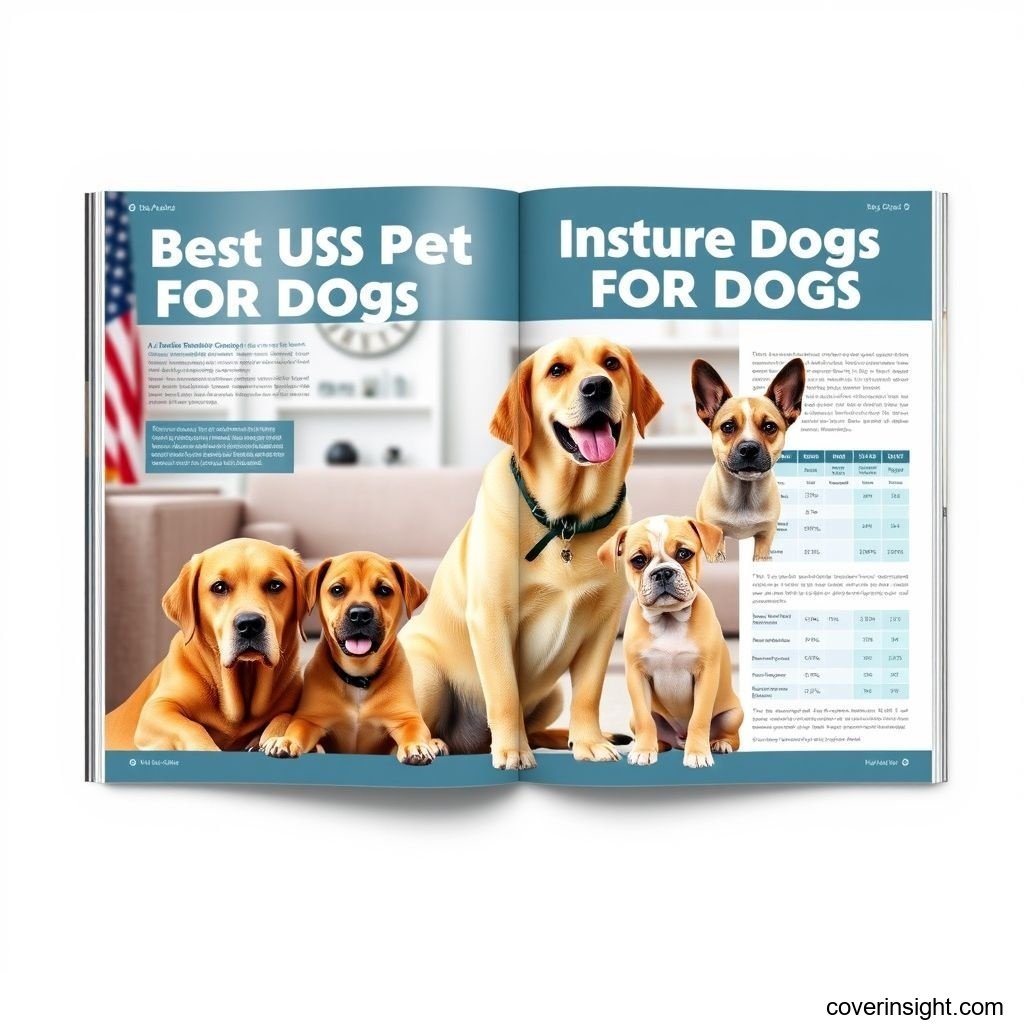Smart Pet Insurance US 2025: Your Best Coverage Guide
Introduction
Navigating the world of pet care can be a joyous, albeit sometimes expensive, journey. As we look towards 2025, securing the best pet insurance for dogs in the US is no longer just a luxury; it's becoming an essential financial safety net for countless pet parents. With veterinary costs on the rise, a good policy can provide peace of mind, ensuring your beloved canine companion receives the best possible medical attention without breaking the bank. From unexpected accidents to managing chronic illnesses, understanding your coverage options is paramount to being a responsible pet owner.
Coverage Details
What’s Included
The best pet insurance for dogs typically offers comprehensive coverage for a wide range of medical needs. Most plans cover unexpected accidents and illnesses, which can include everything from broken bones and cuts to ear infections, cancer treatments, and diabetes management. This usually extends to diagnostics like X-rays, blood tests, and MRIs, as well as prescribed medications, surgeries, emergency vet visits, and specialist care (e.g., dermatology, cardiology). Many providers also offer optional wellness add-ons, which can help cover routine care like annual check-ups, vaccinations, flea and tick prevention, and dental cleanings, making it a holistic approach to your dog's health.
Common Exclusions
While pet insurance is a lifesaver, it’s crucial to understand what's typically not covered. The most common exclusion is pre-existing conditions – any illness or injury your pet had before the policy started or during a waiting period. This is why getting coverage early in your dog’s life is often wise. Other exclusions usually include cosmetic procedures (like tail docking or ear cropping), grooming, breeding-related costs, and sometimes even specific hereditary conditions if they manifest before coverage begins or during a waiting period. Always read the fine print to avoid any surprises down the road.
Cost Analysis
Price Factors
The cost of the best pet insurance for dogs isn't one-size-fits-all; it's influenced by several key factors. Your dog’s breed plays a significant role, as certain breeds are predisposed to specific health issues. For instance, large breeds like German Shepherds or Golden Retrievers might have higher premiums due to their propensity for hip dysplasia or certain cancers. Age is another major factor; older dogs generally cost more to insure than puppies. Where you live also impacts pricing, as veterinary costs vary by region (e.g., urban areas often have higher vet fees). Finally, your chosen plan’s specifics – such as the deductible amount, reimbursement percentage (e.g., 70%, 80%, or 90% of covered costs), and annual payout limit – directly affect your monthly premium.
Consider Sarah from Austin, Texas. Her Golden Retriever, Buddy, needed emergency surgery after swallowing a toy. The bill? A whopping $7,000. Thankfully, her pet insurance covered 80% after her deductible, turning a potential financial crisis into a manageable expense. This isn't an isolated incident; according to the American Pet Products Association (APPA), Americans spent an estimated $38.2 billion on vet care and product sales in 2023, underscoring the rising costs of pet healthcare across the nation.
Saving Tips
Looking to save a few bucks on your pet insurance without compromising on quality? There are several smart strategies. Many providers offer multi-pet discounts if you insure more than one animal, which can be a real boon for households with a furry pack. Opting for a higher deductible can significantly lower your monthly premium, though it means paying more out-of-pocket before your coverage kicks in. Similarly, choosing a lower reimbursement percentage or a lower annual payout limit will reduce your premium, but you'll bear more of the cost if a major incident occurs. Paying annually instead of monthly can also net you a small discount with some insurers. Before committing, it's always a good idea to compare multiple quotes and check resources like the National Association of Insurance Commissioners for general information on insurance regulations.
FAQs
-
How much does best pet insurance for dogs cost?
The average cost for the best pet insurance for dogs in the US can range from $30 to $70 per month, though this varies greatly based on the factors mentioned above. A larger, older dog in a high-cost-of-living area with comprehensive coverage might cost upwards of $100 per month, while a younger, smaller breed with basic accident-only coverage could be much less.
-
What affects premiums?
Premiums are primarily affected by your dog's breed, age, and location. Your chosen deductible, reimbursement percentage, and annual payout limit also play a crucial role. Opting for comprehensive plans that cover both accidents and illnesses, or adding wellness packages, will naturally lead to higher premiums.
-
Is it mandatory?
No, pet insurance is not mandatory in the US. Unlike auto insurance in most states, there's no legal requirement to carry pet insurance. However, as medical advancements for pets grow, so do the costs, making it a highly recommended financial tool.
-
How to choose?
Choosing the best pet insurance for dogs involves comparing plans based on coverage limits, deductibles, reimbursement percentages, and exclusions. Look into the provider’s reputation, customer service reviews, and claims process. Consider your dog's specific needs, breed-specific predispositions, and your budget. Just as you might use Healthcare.gov for human health plans, a similar diligent approach is needed for pet insurance. Checking with your State Insurance Departments can also provide valuable local consumer information. For more general advice, explore various Insurance Resources Global portals.
-
Consequences of no coverage?
Without pet insurance, you face the full brunt of veterinary costs out-of-pocket. This can lead to difficult decisions if your pet faces a serious illness or injury requiring expensive treatment, potentially forcing you to choose between your pet’s health and your financial stability. Many owners have found themselves in a bind, with some even having to opt for economic euthanasia due to insurmountable vet bills. Having coverage provides a crucial safety net for those unexpected "uh-oh" moments. For more information on pet care and general insurance decisions, you can visit US Insurance Home.
Based on my experience living in the US and navigating the often-complex world of pet care, investing in pet insurance is one of the smartest decisions a pet parent can make. I've seen firsthand how a sudden illness or accident can emotionally and financially devastate a family without adequate coverage. It’s not just about mitigating risk; it's about safeguarding the unwavering bond you share with your furry family member, ensuring that when the chips are down, you can focus on their recovery, not your bank balance.







Comments